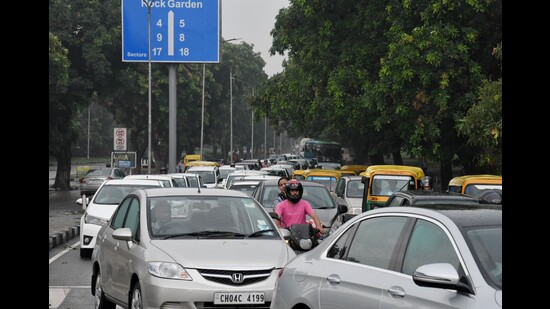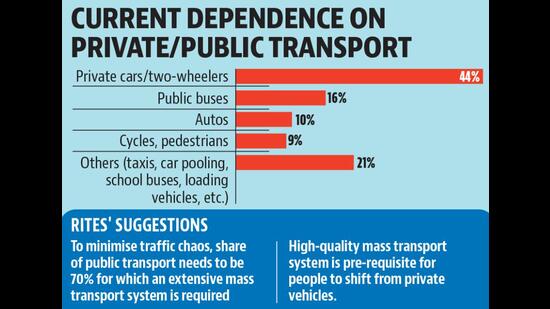Public transport, not pvt vehicles, preferred choice for Chandigarh residents: RITES report
Around 88% people in Chandigarh are willing to shift from their existing private transport mode to a better public transport system, states the RITES report
An overwhelming number of Chandigarh residents are ready to forego travelling by their private vehicles for public transport, even if it entails paying more. Their only condition: a robust mass rapid transport system (MRTS).

These are findings of the latest survey conducted by the Rail India Technical and Economic Services (RITES), which is working on a comprehensive mobility plan to resolve the burgeoning traffic woes in Chandigarh, Panchkula and Mohali.
As per the interim report submitted by RITES, “Around 88% people are willing to shift from their existing private transport mode to a better public transport system.”
Currently, only 16% of the city’s population is using buses, the only local public transport option available in the tricity. But this needs to be increased to 70% to tackle the traffic chaos, states the RITES report.
RITES surveyed whether people were ready to pay for an improved public transport system and found that more than 80% were willing to pay extra fare if provided better public transport options like MRTS.

Workers, students primary users of local public transport
Majority of those taking public buses are doing it for work and business purposes, accounting for 70% of the total users of public transport, while students comprise 15% of the daily users, states the RITES report.
The maximum demand for public transport in the tricity is at PGIMER, Housing Board Chowk in Manimajra, Majri Chowk and Kharar Bus Stand.
Majority of the passengers (53%) access the public transport stops by walking and only 16% use private vehicles.
Notably, more than 70% of the passengers have to travel less than 1 km to access the nearest bus stop. The buses are also relatively cheap, as around 34% of short distance trips cost less than ₹20.
ISBT-43 caters to most inter-city passengers
The RITES report found that the Sector-43 ISBT saw a daily footfall of over 71,000 people, including both intra-city and inter-city travellers. While the Chandigarh Railway Station caters to around 40,000 passengers daily, the number is around 10,000 at the Chandigarh International Airport, it states.
Among them, majority of the bus and rail trips are undertaken for work and business purposes, while most air travellers are headed out for tourism. Around 26% of bus trips are performed for educational purposes, states the report.
Maximum passengers use local buses and autos to reach the bus and rail stations for further travel, while most air passengers use private cars or taxis to reach the airport.
Majority of the bus passengers are daily travellers, while most of the rail and air passengers are occasional travellers.
Findings in line with CEPT report
Similar findings were reported by CEPT University, Ahmedabad, in its report on Chandigarh’s public transport. Instituted by the Chandigarh transport department under the World Bank-sponsored Intelligent Transport System project, the report had highlighted major weaknesses in the city’s public transport.
It had pointed out that nearly 80% of Chandigarh Transport Undertaking (CTU) buses, on an average, ran vacant. “The load factor (bus seat capacity being occupied) of the service is around 22%, which is much lower than the desired range of 65-75%,” stated the report.
One of the reasons is the low trust on the system. “On an average 8% trips are cancelled daily without any prior information,” stated the report.
It had suggested the involvement of private operators in running and managing public transport through public private partnership (PPP) model.




